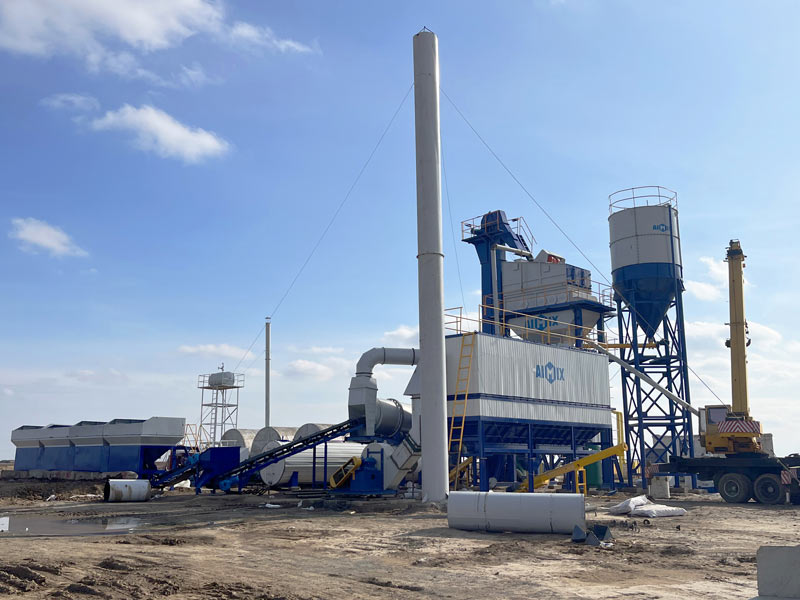Rural infrastructure development is a top priority for many Latin American countries aiming to improve regional connectivity, reduce poverty, and stimulate economic growth. One of the key enablers of this transformation is the adoption of small smart asphalt plants. Compact, mobile, and intelligent, these advanced systems are tailored to meet the challenges of remote road projects where logistics, budget, and technical resources are often limited. Their growing presence is reshaping how rural roads are built—faster, cheaper, and with better long-term performance.
Why Rural Road Projects Need a Different Approach
Building roads in rural areas across Latin America is far more complex than in urban centers. Remote locations often suffer from limited access to power, water, skilled labor, and material supply chains. Transporting asphalt from centralized production facilities to these areas is time-consuming and costly, often compromising mix quality during the journey.
This is where a small, self-sufficient mini asphalt plant(mini planta de asfalto) becomes invaluable. These plants can be installed near the construction site, minimizing transport delays, material waste, and production disruptions. Their small footprint, combined with smart automation, enables contractors to deploy them quickly and manage them with minimal personnel.

The Core Advantages of Small Smart Asphalt Plants
1. Easy Transportation and Installation
Small smart asphalt plants are usually skid-mounted or trailer-based, allowing them to be easily transported to remote job sites. Their modular design means installation can be completed in a matter of days, without the need for specialized infrastructure or heavy foundations.
Compared to traditional stationary asphalt plants(planta asfáltica), which may take weeks to install and require significant logistical planning, mobile solutions are ideal for rural environments. Once the project is completed, the plant can be disassembled and relocated to the next site—boosting long-term return on investment.
2. Automation Reduces Labor Requirements
Rural projects often face labor shortages and a lack of skilled technicians. Smart mini asphalt plants are equipped with programmable logic controllers (PLC), touchscreen interfaces, and automatic weighing and mixing systems. This allows for one-touch operation and reduces reliance on multiple operators.
With real-time monitoring and self-diagnosis features, the system can automatically adjust temperature, flow rates, and material ratios to ensure high mix quality. These capabilities make it easier for small teams to manage production effectively and consistently, even in isolated regions.
3. Cost-Effective Production for Small-Scale Projects
Many rural road projects in Latin America involve relatively short stretches of pavement—10 to 50 kilometers—which do not justify the use of large, high-capacity asphalt plants. A mini asphalt plant, with its moderate output of 10–40 tons per hour, perfectly matches the scale of these jobs.
Fuel efficiency, low maintenance costs, and reduced setup times further contribute to the plant’s economic advantages. The overall result is a lower cost-per-ton of asphalt mix, which can make the difference between completing a project within budget or facing delays and overruns.
4. Reliable Performance in Harsh Conditions
Rural job sites often present tough environmental conditions, including high humidity, dust, extreme heat, or altitude. Smart mini plants are designed with durable components, corrosion-resistant coatings, and weatherproof enclosures to withstand these challenges.
Some models even include automated maintenance alerts and remote diagnostics through IoT platforms, helping teams identify issues before they cause equipment failure. This level of reliability is crucial when spare parts and repair technicians are not readily available.

Mobile Asphalt Plants: Expanding Flexibility
Many small smart plants fall under the category of mobile asphalt plant(planta asfaltica movil) solutions, offering additional flexibility for rural projects. Whether it’s road repairs, village access roads, or agricultural transport routes, mobile plants can shift locations as work progresses.
This flexibility also enables governments and contractors to handle multiple small projects across different regions without needing to invest in separate equipment for each site. When road construction is funded by public budgets or aid agencies, such efficient use of capital is particularly valuable.
Case in Point: Rural Colombia
In rural Colombia, a government-led program to pave agricultural roads recently deployed multiple mobile smart asphalt plants to different departments. One mini plant, producing just 20 tons per hour, enabled the local team to pave 15 kilometers of road within two weeks—cutting average transport time for farmers by 30%. The project received high praise for its low cost and high community impact.
Comparing Options: What to Consider
When evaluating options for rural deployment, several factors should be taken into account:
- Capacity vs. demand: Choose a plant that matches your average daily paving needs without unnecessary overhead.
- Automation features: Ensure the plant includes auto-dosing, temperature control, and remote monitoring if available.
- Mobility: A trailer-based mobile asphalt plant may provide better ROI for multi-site operations.
- Durability and after-sales support: Make sure the supplier offers reliable technical service and readily available spare parts.
The Future of Rural Road Construction
As Latin America continues to invest in connecting its rural regions, the demand for smart, flexible, and affordable road construction technology will only grow. Small intelligent asphalt plants(planta de asfalto Perú) offer a powerful solution, bridging the gap between budget constraints and infrastructure needs.
With their compact design, efficient performance, and automation, these mini asphalt plants enable governments and contractors to deliver high-quality roads in places that were once considered too remote or difficult to serve. Whether deployed in the Andes, Amazon basin, or arid zones of northern Mexico, these plants are helping to lay the foundation—literally—for a more connected and prosperous rural Latin America.